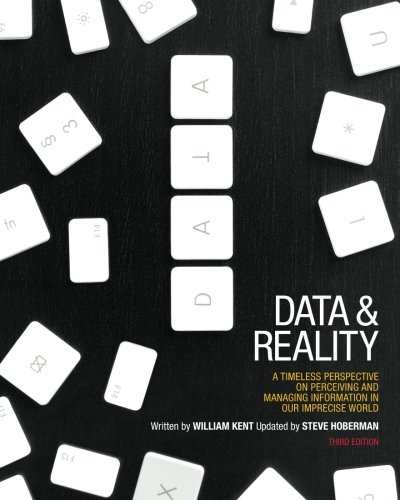

Most ebook files are in PDF format, so you can easily read them using various software such as Foxit Reader or directly on the Google Chrome browser.
Some ebook files are released by publishers in other formats such as .awz, .mobi, .epub, .fb2, etc. You may need to install specific software to read these formats on mobile/PC, such as Calibre.
Please read the tutorial at this link. https://ebooknice.com/page/post?id=faq
We offer FREE conversion to the popular formats you request; however, this may take some time. Therefore, right after payment, please email us, and we will try to provide the service as quickly as possible.
For some exceptional file formats or broken links (if any), please refrain from opening any disputes. Instead, email us first, and we will try to assist within a maximum of 6 hours.
EbookNice Team

Status:
Available5.0
17 reviewsData and Reality gracefully weaves the disciplines of psychology and philosophy with data management to create timeless takeaways on how we perceive and manage information. Although databases and related technology have come a long way since 1978, the process of eliciting business requirements and how we think about information remains constant. This book will provide valuable insights whether you are a 1970s data-processing expert or a modern-day business analyst, data modeler, database administrator, or data architect.
This third edition of Data and Reality differs substantially from the first and second editions. Data modeling thought leader Steve Hoberman has updated many of the original examples and references and added his commentary throughout the book, including key points at the end of each chapter.
The important takeaways in this book are rich with insight yet presented in a conversational writing style. Here are just a few of the issues this book tackles:
From Graeme Simsion's foreword:
While such fundamental issues remain unrecognized and unanswered, Data and Reality, with its lucid and compelling elucidation of the questions, needs to remain in print. I read the book as a database administrator in 1980, as a researcher in 2002, and just recently as the manuscript for the present edition. On each occasion I found something more, and on each occasion I considered it the most important book I had read on data modeling. It has been on my recommended reading list forever. The first chapter in particular should be mandatory reading for anyone involved in data modeling.
In publishing this new edition, Steve Hoberman has not only ensured that one of the key books in the data modeling canon remains in print, but has added his own comments and up-to-date examples, which are likely to be helpful to those who have come to data modeling more recently. Don't do any more data modeling work until you've read it.